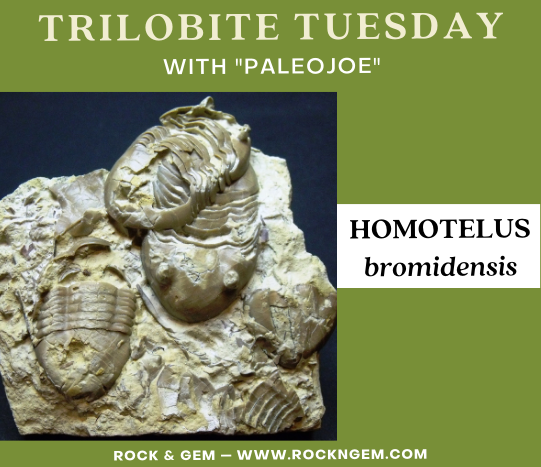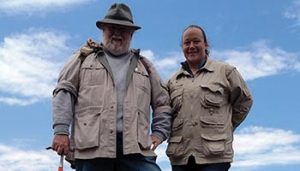
By Joseph “PaleoJoe” Kchodl
The Ordovician trilobite HOMOTELUS bromidensis is often found in mass death assemblages. It is theorized that they perished due to a catastrophic event during the mating period. Today, modern horseshoe crabs gather by the tens of thousands for mating.
HOMOTELUS bromidensis is a very wide trilobite that has a cephalon and pygidium roughly the same size. Both the cephalon and pygidium are unornamented and quite flat. Its eyes were small and crescent shaped. It typically has only eight body segments.
Found in Carter County, Oklahoma, HOMOTELUS bromidensis averaged around two inches in length.
DID YOU KNOW: Trilobites, an extinct form of arthropod related to insects, crabs, crayfish, and horseshoe crabs, are among the most prevalent invertebrates with hard body parts to appear during the Cambrian Period. These creatures are called trilobite due to the three distinct “lobes” running vertically through the body section.

About the columnist: Joseph “PaleoJoe” Kchodl is a paleontologist, educator, veteran, author, fossil dig organizer/guide, business owner, husband, father, and grandfather, and fossil fanatic. For decades, he’s spent hours in classrooms around the Midwestern United States and beyond, speaking to school children about fossils and fossil hunting. Visit his site to purchase fossils, contact PaleoJoe, visit www.paleojoe.com.
Plus, learn more about PaleoJoe and his daughter PaleoJen and their paleontology exploration partnership in an the article “Fueling a Passion for Paleontology“.
If you enjoyed what you’ve read here we invite you to consider signing up for the FREE Rock & Gem weekly newsletter. Learn more>>>
In addition, we invite you to consider subscribing to Rock & Gem magazine. The cost for a one-year U.S. subscription (12 issues) is $29.95. Learn more >>>















